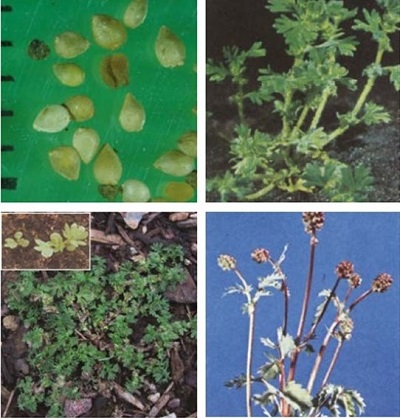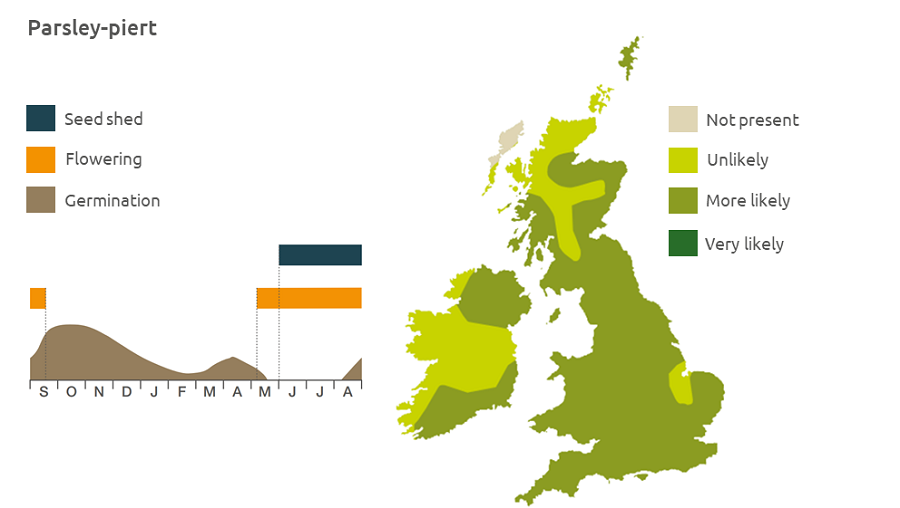- Home
- Knowledge library
- Distribution and biology of parsley-piert in the UK
Distribution and biology of parsley-piert in the UK
Parsley-piert is a broad-leaved weed found throughout most of the UK. Find out how to identify and control it.
Overview
Parsley-piert (Aphanes arvensis) grows before the crop fully establishes and in late summer after harvest. It mainly germinates in autumn from seeds which come from a persistent seedbank. Young plants can overwinter. It is very drought resistant.
Description
It is a small creeping annual dicotyledon, up to 10 cm in size. The leaves have three lobes, each divided further into five to seven parts.
Key features
Plant: The plant appears to have no flowers, as they are green and inconspicuous.

Location and life cycle

Geographic distribution
Parsley-piert is found on arable land and droughted soils, and on other sites with a large exposure of bare soil, usually in lowland habitats up to an altitude of 300 m.
Soil type
It grows in dry alkaline or acidic soils, but rarely below pH 5.
Seed statistics
- Seed longevity: >5 years
- Seed weight: 0.67 mg
- Seeds/flower: 1
Management
It can be reduced by ploughing and spring cropping. Grass breaks can reduce the seedbank. It is encouraged by fallow, reduced cultivation and direct drilling, so mouldboard ploughs should be used.
For advice on herbicides, please speak with your agronomist or adviser.
When was this information last updated?
This page is based on content from the encyclopaedia of arable weeds publication. Since it was first released in 2008, the publication has been redesigned several times but not revised. However, it remains a good foundation for general information on the distribution and biology of weeds.

